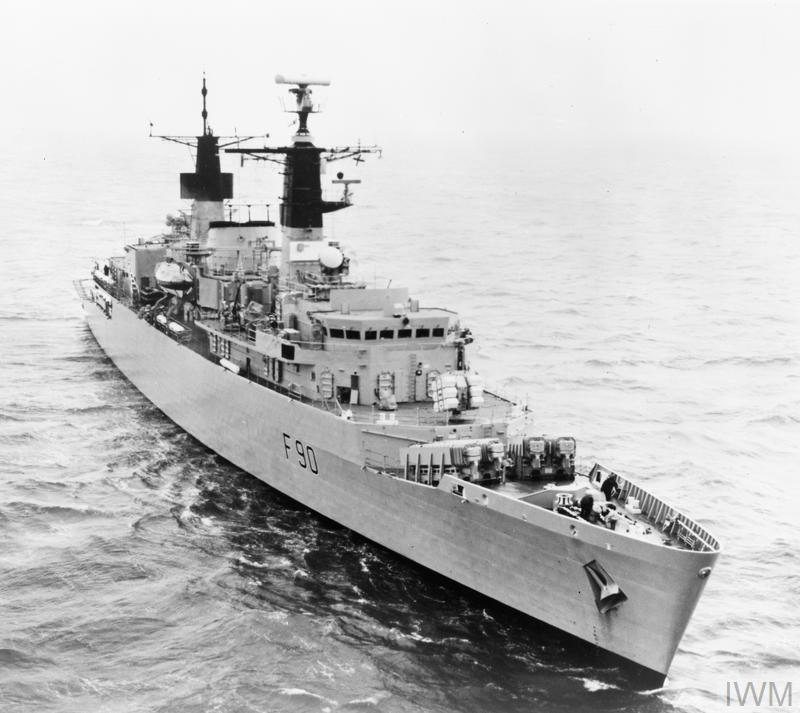Having detached the Antrim Group, which had arrived at Ascension Island a day earlier, the remainder of the advanced Group reached the remote Atlantic outpost on Easter Sunday, 11 April 1982.
This group now consisted of flagship HMS Glamorgan, a County-class guided missile destroyer, Type 42 destroyers HMS Sheffield, HMS Coventry and HMS Glasgow, Type 21 frigate HMS Arrow and Type 22 frigate HMS Brilliant.
Later on the same day the Antrim Group, or South Georgia Task Group, prepared to sail for South Georgia after a rapid turnaround at the island. The visit, which lasted barely a day, saw “intensive troop transport to ships and embarkation of stores/equipment”, according to an official record by Antrim’s helicopter flight.
Further south, two Royal Navy nuclear submarines had arrived in the area of the Falklands ready to enforce the Maritime Exclusion Zone which was due to come into force the following day.
HMS Spartan had been sent south before Argentine forces had even set foot on the Falklands, and was not only capable of lurking unseen and attacking enemy vessels, but could also provide valuable intelligence on Argentine ship and aircraft movements.
She was joined by HMS Splendid, another Swiftsure-class boat, which had been in service for less than a year. Like Spartan, she was never to engage directly with the enemy, but also gathered vital intelligence and, perhaps just as importantly, cast doubts in the minds of Argentine commanders, who were less inclined to throw ships into the fray with the threat of British submarines operating in the area.
* These posts can only give a brief sense of what was a complex and fast-moving situation 40 years ago, and cannot cover the involvement of every ship, squadron and unit in detail – for a much more comprehensive account see naval-history.net at https://www.naval-history.net/NAVAL1982FALKLANDS.htm
Today’s image, from the Imperial War Museum collection (© IWM MH 27576), is of Type 22 frigate HMS Brilliant, part of the Antrim Group that arrived off Ascension Island on 11 April 1982.
The Royal Naval Association is the biggest collective group of Royal Naval veterans and serving personnel, with more than 270 branches in the UK and overseas.
The RNA provides those with a link to the Royal Navy access to a life-long community of like-minded and supportive individuals.
Our community provides companionship, resilience, comradeship and unity to anyone and everyone with a Naval story, supporting them through life's highs and lows.
Membership is now free (please note, some branches may charge a small annual subscription, payable locally on their request) – see https://royal-naval-association.co.uk/join-us/ for details of how to join.
